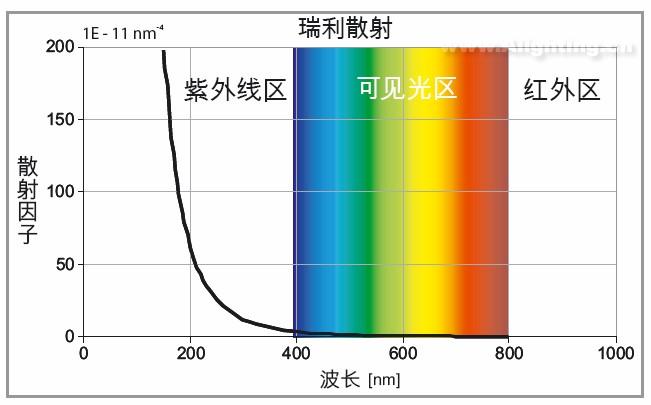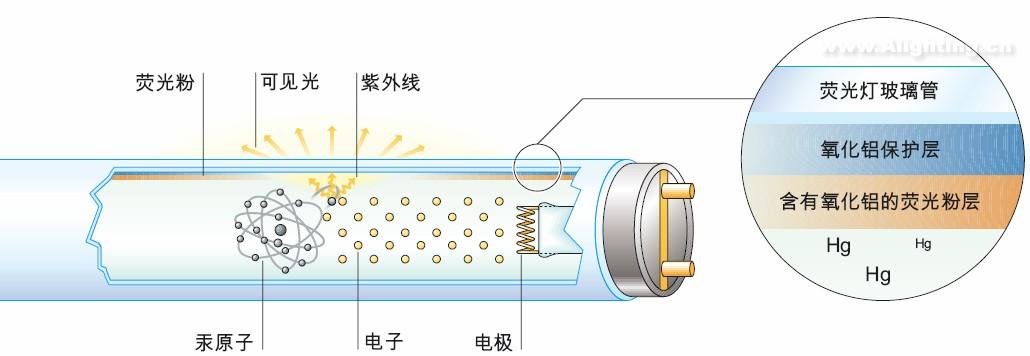Editor's Note: Evonik Degussa's AEROXIDE® fumed alumina products have many special physicochemical properties, such as nano-sized particles, high purity, low water content, which are among the best high-quality fluorescent Lamp coating solutions available today. A vital part. AEROXIDE® Alu C fumed alumina has become an indispensable component of fluorescent lamps. It has three important functions that are essential for the manufacture of high-efficiency, long-life fluorescent lamps: first, the reflection of alumina through the phosphor layer Ultraviolet light, which continues to excite the phosphor, improves the luminous efficiency of the fluorescent lamp. Second, alumina acts as an effective barrier to mercury diffusion, which minimizes the amount of mercury and extends the life of the lamp. Third, Alumina as a binder can increase the bonding strength between the phosphor and the glass tube, so that the phosphor does not fall off.
introduction
The alumina produced by the gas phase method has the characteristics of fine particles, high purity, good dispersibility and positively charged surface, and is widely used in fluorescent energy-saving lamps, photo printing papers and powder coatings. In recent years, energy-saving fluorescent lamps for lighting have been given significant significance in terms of energy conservation for the purpose of achieving sustainable development and environmental protection, and energy-saving fluorescent lamps for lighting have been given great significance. Governments have also made great efforts to promote the use of fluorescent lamps and encouraged the development of higher luminous efficiency. Longer life fluorescent lamp products. In fluorescent lamps, fumed alumina is used to protect the film. It has the function of reflecting ultraviolet rays and blocking the diffusion of mercury. At the same time, it can be used as a binder for phosphors, which can effectively improve the light efficiency and extend the life of the lamp. The preferred solution for product quality.
1 Preparation and properties of fumed alumina 1. Preparation process of fumed alumina
The preparation process of large-scale industrial synthesis of fumed alumina can be described as a high-temperature combustion hydrolysis process of aluminum trichloride (AlCl3). In the process of aluminum trichloride
It becomes a gas phase, and then reacts with the hydrogen-oxygen flame combustion product-water to form a product alumina. The chemical reaction equation is:
2AlCl3+3H2+1.5 O2 Al2O3+ 6HCl
This special production process was invented by Evonik Degussa more than 60 years ago due to the use of high temperature combustion hydrolysis.

Figure 1 Computer model of fumed alumina
AEROXIDE® is known as fumed alumina. Its products are composed of nano-sized primary particles with low bulk density and easy to disperse in water systems. Figure 1 shows fumed alumina.
A computer model of the unique structure that is owned.
1.2 Gas phase alumina performance
Evonik Degussa's AEROXIDE® fumed alumina is a fluffy white powder with primary particles between 7 and 40 nm in diameter. The primary particles are not isolated, but are agglomerated into hundreds.
Nano-sized agglomerated particles, the raw materials used are completely derived from chemical reactions and are of high purity. AEROXIDE ? The purity of fumed alumina is over 99.8%, and the heavy metal content is generally lower than conventional
The detection limit of the method. And there are many ways to change the surface and structure of AEROXIDE? to meet the requirements of various applications. For example, AEROXIDE® Alu 65 has a surface area of ​​only 65m2/g, while AEROXIDE® VP Alu3 has a specific surface area of ​​130 m2/g. The most widely used AEROXIDE® Alu C in fluorescent lamp protective coatings has a specific surface area of ​​100 m2/g. , Table 1 shows
Physicochemical data for the main products of AEROXIDE® fumed alumina.

2 AEROXIDE® fumed alumina is the main function in fluorescent lamps
2.1 Alumina as a selective UV reflective material
The alumina powder is white opaque due to light scattering on the alumina surface. Light scattering properties as well as primary particle size and agglomerate structure make AEROXIDE?
Alumina is a near-perfect optical medium that acts as a wavelength selective UV reflective material. Figure 3 clearly shows this scattering characteristic of alumina.

Figure 3 shows the relationship between the characteristics of scattered light and the wavelength of light according to Rayleigh's law of scattering.
Although the scattering factors of various wavelengths are not much different in the range of visible light, the scattering factor rises sharply in the ultraviolet region, which means that under the same conditions, the scattering intensity of light is
The 254 nm is 16 times higher than at 500 nm (green): 100 times higher than the scattering intensity at 800 nm (red light). Therefore, the aluminum oxide protective film on the inside of the fluorescent tube is
The light is almost transparent, but it reflects the ultraviolet light that passes through the phosphor layer, so that it continues to excite the phosphor to emit light, which improves the luminous efficiency of the fluorescent lamp.
2.2 Alumina as a barrier to mercury diffusion
Lamps that are not coated with alumina continue to have some mercury diffusing through the layer of fluorescent material into the glass tube, and the tube becomes gray over time. On the one hand, this effect makes ultraviolet rays
Mercury loss, on the other hand, the gray tube absorbs more visible light and converts it into heat. In order to make up for these losses, it is necessary to increase the amount of mercury and increase the power, but this will cause the lamp to be hotter.
This further exacerbates the spread of mercury. A layer of alumina acts as an effective mercury barrier on the inside of the tube, reducing the amount of toxic heavy metals required and extending lamp life.
2.3 Alumina as a phosphor layer inorganic binder
The phosphors have poor adhesion to each other and to the glass surface. The aggregate particles of AEROXIDE® fumed alumina have a particle size between 0.1 and 0.2 microns and can be used as a particle size of 6-10 microns.
The left and right phosphors are filled with fine powder, so adding 2~5% AEROXIDE? fumed alumina as an inorganic binder in the phosphor slurry can significantly enhance the phosphors between each other and between the tubes. Adhesion to avoid the falling off of the phosphor.
2.4 Design of fluorescent lamp with aluminum oxide protective film
As shown in Fig. 2, a fluorescent lamp is produced by using an aluminum oxide protective film. First, a pure aluminum oxide protective film is coated on the inner side of the glass tube, and the coating thickness is about 3-5 micrometers. Second, in order to improve the phosphor layer
The adhesion is usually added to the phosphor slurry to a mass of 2-5% of the phosphor. Finally, the phosphor with alumina is applied to the oxygen in the form of a slurry.

Figure 2 Structure of a fluorescent lamp with aluminum oxide protective film
On the aluminum protective film, it is made into a fluorescent lamp through other subsequent processes. The design of the fluorescent lamp with aluminum oxide protective film fully utilizes the three protective functions of alumina to improve fluorescence.
The light efficiency, lumens and longevity of the lamp are commonly used by some famous fluorescent lamp manufacturers in the world to produce high quality fluorescent lamps. Table 2 shows a comparison of experimental data with an alumina protective film and a fluorescent lamp without an alumina protective film. It can be seen from the table that under the same process conditions, the initial luminous flux of the second group of fluorescent lamps without the aluminum oxide protective film is stronger, which is by visible light.
The alumina protective film is caused by about 1% attenuation, but the luminous flux and light decay of the first group of fluorescent lamps with an aluminum oxide protective film after 1000 hours are significantly better than the two sets of fluorescence without the protective film.
The lamp fully demonstrates the superiority of the design with an aluminum oxide protective film.
Led Street lights play an important role in life, suitable for streets, urban roads, residential areas, courtyards, gardens and so on. Adaptive beam angles are a feature of street light.Street lights not only have a strong structure to withstand all weather conditions and influence factors to ensure the safety of passers-by, but also have a unique design and rich shape, become a beautiful scenery on the way.
l LED Light source, high brightness, high color index, and energy saving.
l Spotlight design, uniform spot, anti glare.
l Corrosion resistant finish
LED Street Light
Solar Street Light,Solar Street Lamp,Solar LED Street Light,Solar Powered Street Lights
JIANGMEN LEDER LIGHTING CO., LTD , https://www.lederlight.com
